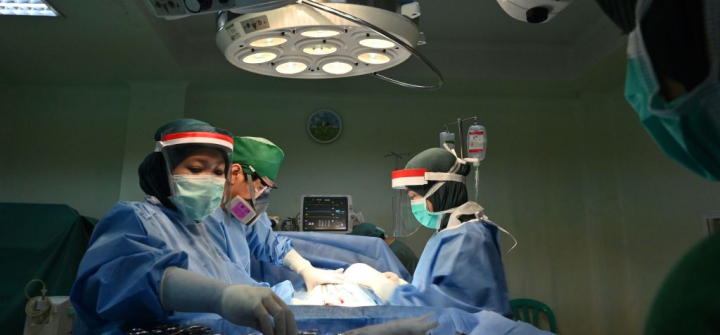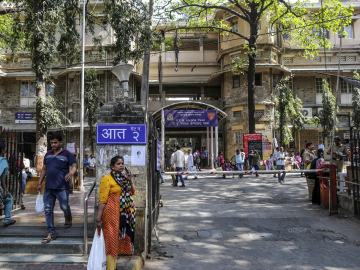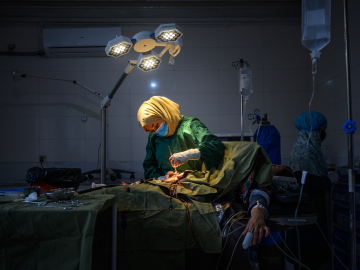We Cannot Tackle Maternal Mortality Without Surgical, Obstetric, and Anesthesia Care
Next week, delegates at the UN General Assembly in New York will reflect on progress at the halfway-point of the sustainable development goals timeline. Among those advocating for “health for all,” maternal mortality will be among the topmost concerns. Maternal mortality rates are rising globally, and at the current rate, we won’t reach the UN’s SDG target for MMR reduction by 2030. And the discussion around MMR is incomplete without noting the critical—yet often neglected role of—surgical, obstetric, and anesthesia (SOA) care. Two notable examples that are pivotal to reducing MMR include optimal Caesarean section rates and adequate SOA workforce availability—yet global surgery indicators are glaringly absent from the SDGs.
Previously, the WHO noted that a C-section rate beyond 10-15% of live births in a year did not improve maternal mortality. More recently, a 19% C-section rate has been found to be associated with MMR reductions. In large LMICs like India, states with <10% C-section rates have MMR as high as 165, while those with rates >20% see no major MMR reductions.
More broadly, there are several large LMICs that need to scale up C-sections. For low-income countries, achieving adequate C-section rates can reduce over 60% of maternal mortality. For large LMICs, high out-of-pocket expenses also act as a barrier to accessing C-sections, thereby contributing to high MMR. On the other hand, several upper-middle-income countries—particularly in their private health sectors—need interventions to scale down excess C-section rates. Unindicated c-sections have been associated with over 3X greater odds of maternal mortality than regular deliveries. They also absorb scarce health system resources such as finance, obstetricians, anesthetists, and radiologists, which are urgently needed elsewhere in a country. Achieving optimal C-section rates is necessary for reducing for maternal mortality. Strengthening C-section delivery and other SOA services at the secondary level of care, in facilities capable of handling complications, is important for reducing access disparities in large LMICs.
To improve C-section services, though, LMICs need more skilled workers. Research associated with the Lancet Commission on Global Surgery noted that having at least 20 SOA specialists per 100,000 people is associated with large reductions in MMR. On average, low-income countries have 0.7 SOA specialists per 100,000 people, while lower-middle-income countries have 5.5 SOA specialists per 100,000 people. This means that over 120 countries need to scale up SOA specialist workforce to reduce MMR. Beyond specialists, shortages and inequitable distribution of allied professionals like nurse-surgeons, nurse-anesthetists, and midwives, among others, also contribute to high MMR. Investments in the training capacity, task-shifting, task-sharing, and team optimization are needed. For instance, countries with undergraduate-level medical courses (e.g., India, Brazil, Tanzania, etc.) can benefit from competency-based training in basic surgical skills training. Additionally, policy interventions that incentivize SOA specialist recruitment and retention in rural regions are key to reducing MMR. The focus needs to be on making SOA specialists available at the lower administrative levels, like the districts.
The omission of global surgery indicators in the millennium and sustainable development goals depict a neglect toward the contributions made by SOA care to MMR reductions. Future discourse, policies, and investments need to correct this.
Siddhesh Zadey BSMS, MScGH is a researcher at GEMINI Research Center, Duke University School of Medicine in Durham, North Carolina, and a co-founder of the Association for Socially Applicable Research (ASAR), a non-governmental, non-profit think & do tank in India.
Nachiket Mor PhD is a visiting scientist at the Banyan Academy of Leadership in Mental Health in India.
Join the 50,000+ subscribers in 170+ countries who rely on Global Health NOW summaries and exclusive articles for the latest public health news. Sign up for our free weekday newsletter, and please share the link with friends and colleagues. https://www.globalhealthnow.org/subscribe
An obstetric team performs a caesarean section delivery at the RSIA Tambak maternity clinic in Jakarta, Indonesia, May 10, 2020. Image: Adek Berry/AFP via Getty






